
Doubled Dies
Click here for a List of Doubled Dies by Year
A doubled die cent is a variety highly sought after by collectors. The devices on the coins surface are doubled and look as if the coin has been struck more than once. In reality, it was the die that struck the coin that had the impression doubled on it, so every coin minted with that die will have the exact same doubling effect.
Prior to 1996 when the mint started using the single squeeze method of producing dies, the die making process went as follows: A "master hub" was created which had the coins design carved in relief (raised). This master hub was used to make master dies, usually two or more, which had the design incuse (pressed into the surface). These master dies were then used to create several working hubs, which had a raised design on them. The working hubs are what were used to press the coin's image into the working dies that would be used to mint the coins. The working dies had the image incuse which created a raised image on the finished coin. Each year the mint uses several different dies to mint the tens of millions of coins produced.
Each time a hub was pressed onto a die, the process needed to be repeated more than once to assure the image was fully impressed into the dies. If the hub and die became out of alignment even a little, it created a doubled image on the die. Everything produced with that die after that step would show the same doubled image.
If it was a master die that had the doubled image, then all of the working hubs created with that die would show the same doubling, and in turn all of the working dies would be doubled too. Since so many coins would be minted that show the same doubling, master die doubling doesn't add to the value or rarity of a coin. This happened to many cents during 1972 where more than half of all the cents produced by all the mints showed master die doubling.
Click here for more about master die doubling
The rarest doubled dies happen when only one working die gets the doubled image. Only the coins minted with that die will have the doubled image. Since the lifespan of a working die is about 6 hours and can mint around 250,000 coins in that time, doubled die coins are rare compared to the total number of coins minted each year. If a doubled working die fails for any reason and is replaced before the average 6 hour time, the coins it minted are even fewer, making it even more rare.
Single Squeeze Method
The single squeeze method of die production began in Denver in 1996 but wasn't implemented at the Philadelphia mint until 1997.
(More Coming Soon)
Shown below are examples of the 9 different classes of doubled dies.
Class I - Rotated Hub Doubling
A class one doubled die happens when the die receives an extra hubbing in a circular motion (clockwise or counter-clockwise)
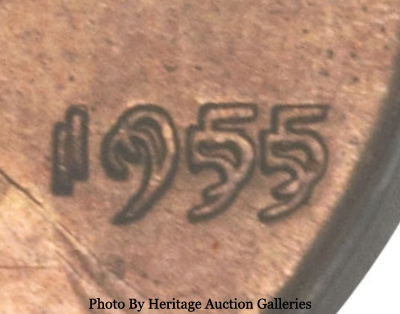
Class II - Distorted Hub Doubling
1964 DDR-008

Photo By Sean O'Connell
Class III - Design Hub Doubling
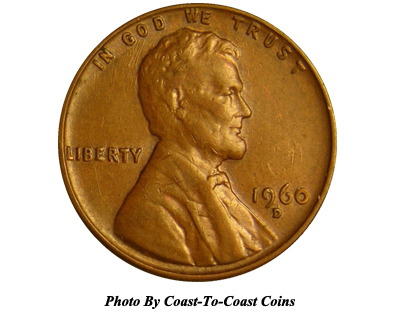
Class IV - Offset Hub Doubling
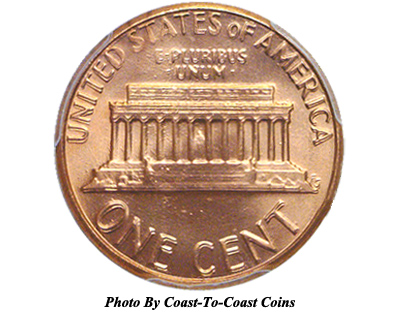
Class V - Pivoted Hub Doubling
A class five doubled die is caused by the die receiving an extra hubbing that was misaligned with a rotation point near the rim.
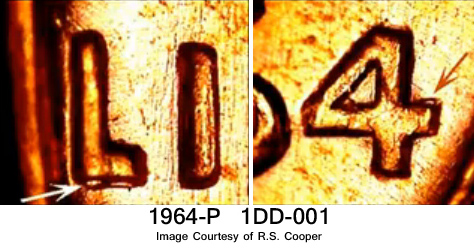
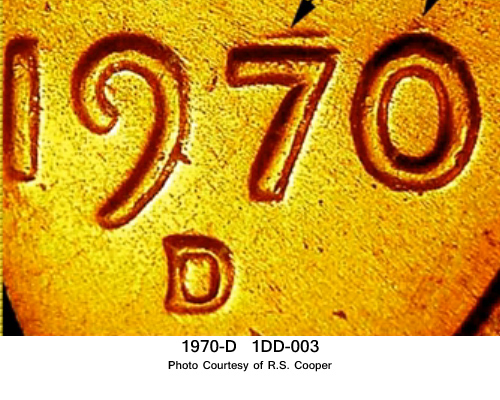
Class VI - Distended (Swelling Outward)
A class six doubled die happens when the die received an extra hubbing from a hub that was distended.
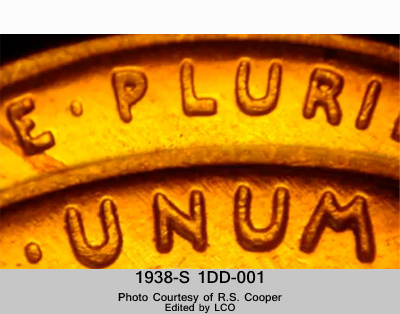
Class VII - Modified Hub Doubling
A class seven doubled die happens when the hub is modified between the die hubbing process. Part of the design was changed or an attempt was made to remove it leaving traces of the original device..
Class VIII- Tilted Hub Doubling
A class eight doubled die happens when a die or hub is tilted when the die is being made.
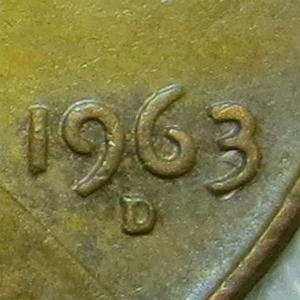
Class IX
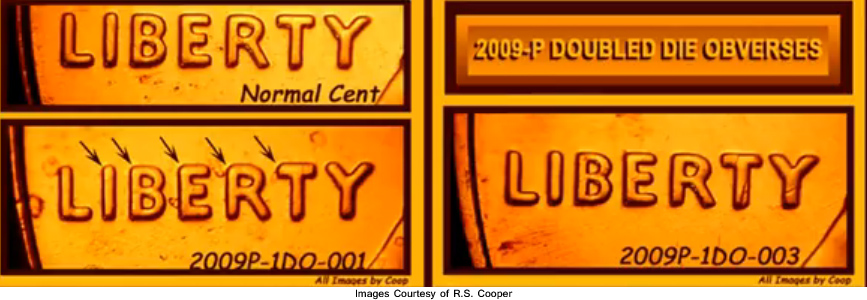
List of Doubled Die Lincoln Cents
More About Doubled Dies
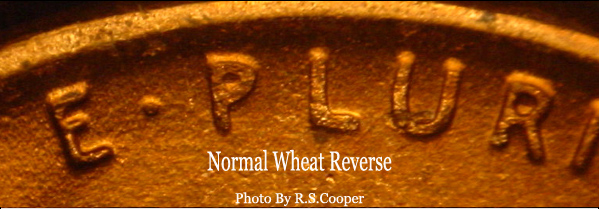
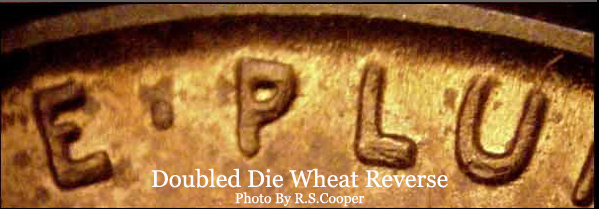
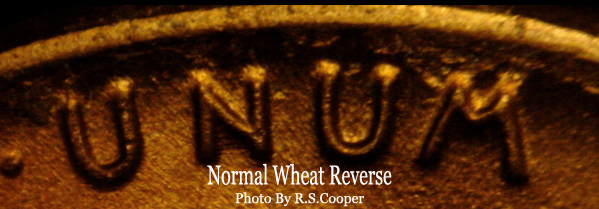
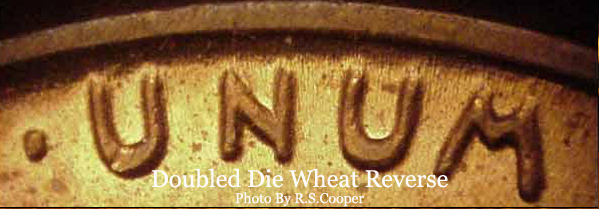
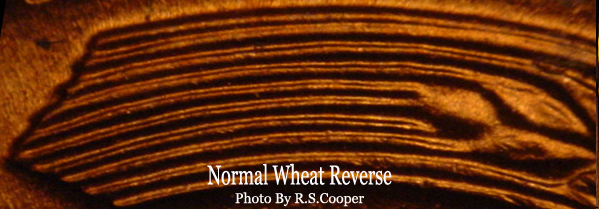
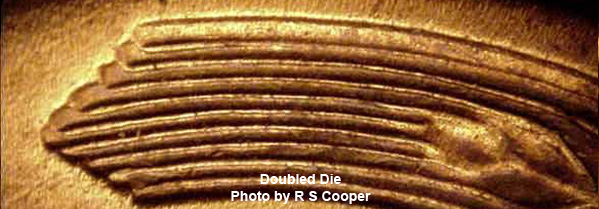
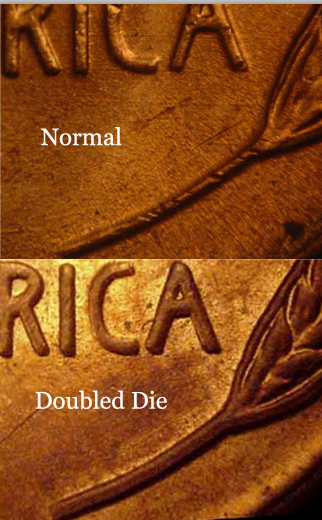
Photo By R.S.Cooper